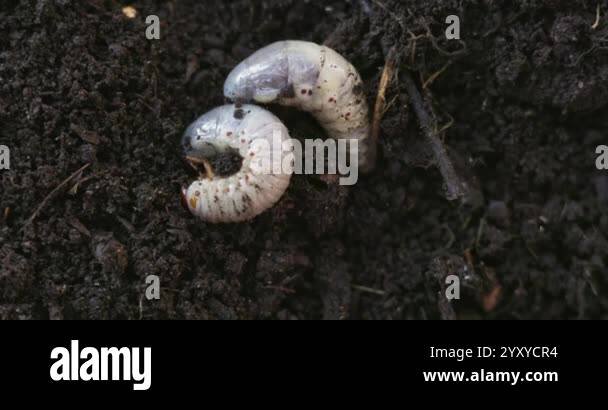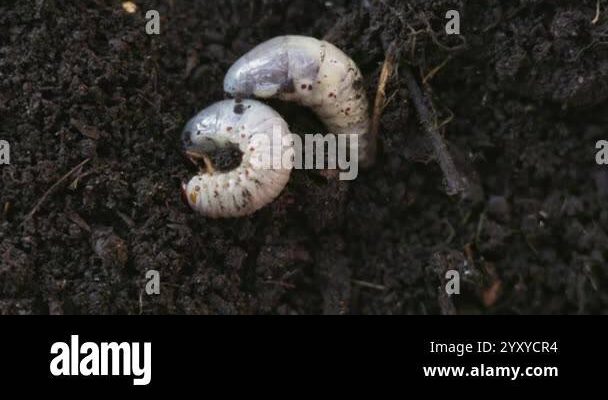
To give you a clearer picture, grub worms are the immature forms of beetles like Japanese beetles and June bugs. They spend much of their lives munching on roots and decomposing organic matter. But just how deep do they burrow? Let’s dig into that question and understand the living habits of these little soil dwellers.
Understanding Grub Worms and Their Habitat
Grub worms primarily make their homes in the soil, which serves as both their refuge and pantry. These little guys thrive in environments where the soil is moist, allowing them to feed on roots and organic material. When you think about it, soil is like a buffet for them—offering a variety of nutrients that support their growth.
You might also be curious about the various species of grub worms. Most commonly, we see the larvae of scarab beetles, including the Japanese beetle. Each type of grub worm has its own preference for soil type, moisture level, and depth. But generally speaking, their primary goal is to stay close to food sources. They typically live anywhere from just below the surface to several inches deep, depending on the environmental conditions.
How Deep Do Grub Worms Typically Live?
Grub worms usually reside about 2 to 6 inches deep in the soil. This depth offers them a perfect balance between access to moisture and safety from predators. Living closer to the surface allows them to feast on grass roots and decaying leaves. However, during hot or dry weather, they dig deeper to find cooler, moister areas, sometimes reaching depths of 8 to 10 inches.
It’s like how we might retreat to the cool shade on a scorching day. Grub worms adapt their depth based on the conditions of their surroundings. When the soil is too dry or hard, they take the hint and dig down to find a more suitable environment.
Factors Affecting Depth
Several factors play a role in how deep grub worms can go. Let’s break this down:
- Soil Texture: Sandy soils tend to allow for deeper burrowing than clayey soils. Grub worms prefer looser, well-aerated soils where they can easily navigate.
- Moisture: During periods of drought, they tend to bury themselves deeper. In well-watered areas, they might stay closer to the surface.
- Temperature: As cold-blooded creatures, their activity levels fluctuate with the temperature. Colder weather may push them deeper for warmth.
By understanding these factors, gardeners can better manage their lawns and reduce the chances of grub worm infestations.
The Life Cycle of Grub Worms
Grub worms have a fascinating life cycle that involves several stages: egg, larva (the grub stage), pupa, and finally, adult beetle. After laying their eggs in late spring or early summer, the larvae emerge and start feeding on plant roots. This is when they begin to make their home in the soil.
During their larval stage, they typically remain underground for about 3 to 4 months, depending on environmental conditions. In the fall, they enter a resting phase as pupae in the soil. As temperatures decline, they dig deeper to escape the cold.
It’s almost like they go to sleep underground! Come spring, they transform into adult beetles and emerge to continue the life cycle above ground.
Why Does Depth Matter for Grub Worms?
Understanding how deep grub worms live can be important for various reasons—especially if you’re a gardener or homeowner. The depth they burrow affects their feeding habits, how you can manage infestations, and even the health of your lawn.
If grub worms are feeding too close to the surface, they can wreak havoc on grass and plants. Recognizing their preferred depth can help you take preventive measures, such as applying treatments at the right time. If they dig deeper, it might be a sign that your lawn is under stress from heat or drought.
Managing Grub Worm Populations
If you find yourself dealing with a grub worm problem, there are several approaches to consider:
- Cultural Practices: Healthy lawns are less susceptible to grub damage. Regular watering and proper fertilization can make your grass less inviting to grub worms.
- Pest Control: If infestations are severe, you might consider using pesticides. Always follow the guidelines and apply them at the right time, typically when they’re near the surface in late summer or early fall.
By understanding their life cycle and living habits, you can tailor your lawn care effectively.
So, how deep do grub worms live in the soil? Generally, they stay between 2 and 6 inches deep, but they can go deeper if conditions demand it. They are essential players in the ecosystem, breaking down organic matter and providing nutrients to the soil. By recognizing their habits and adjusting your gardening practices, you can maintain a healthy, thriving lawn while keeping these little critters in check.
Next time you dig into your garden, remember that those tiny wrigglers have a story and a purpose. Understanding their depth preferences can make all the difference in how you manage your outdoor spaces. Happy gardening!

